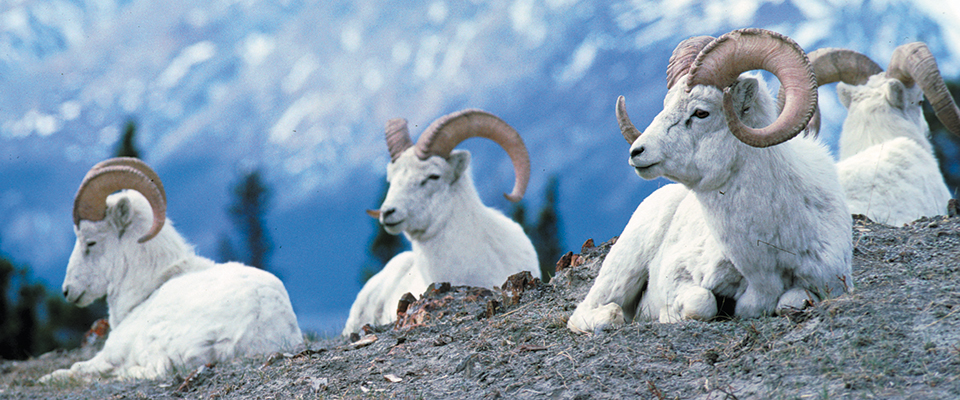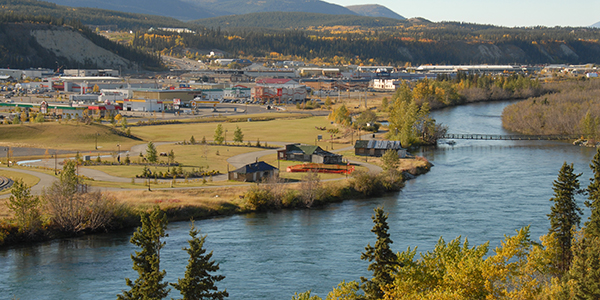

Welcome to the Yukon
A state of mind rather than a place, the Yukon is a land that feels untouched by time. Home to the Inuit, Dene, Inuvialuit and northern First Nations peoples, Canada’s northern wilderness is a vast, sparsely populated (34,000 people) landscape with a raw, untamed beauty. Home to the five highest mountains in Canada, the world’s largest subarctic ice fields, vast herds of wildlife—including ten thousand black bears—foreboding tundra and stunted forest, the Yukon is a land rich in superlatives. A quintessential frontier town, Dawson City was at the center of the Klondike Gold Rush.
With its buckled clapboard buildings, dirt streets and inhospitable climate (-60° C in the winter), Dawson’s charms aren’t of the warm and cozy variety. After decades of decline, Parks Canada has made admirable efforts to restore Dawson City, and with a buoyant arts community and counterculture vibe, it’s a thought-provoking place to rest for a couple of days. Two of the continent’s great highways—the Alaska and the Klondike—cross through Yukon’s amiable capital, Whitehorse. Only a handful of pioneer buildings remain in Whitehorse, but the town’s atmospheric bars, cafés and restaurants ripple with creative energy, thanks to the city’s well-funded arts community.
History
The Inuit and Dene form the majority of the Yukon’s population. Around 1576, Martin Frobisher, an English seaman and licensed pirate (or “privateer”) made contact with the Inuit during his quest to find a passage to the Orient. Frobisher’s written account of his bizarre encounters with the Inuit—the earliest on record—makes for fascinating reading. Hospitality has always been the Inuit’s overarching characteristic. It was the Inuit’s sage knowledge of land and sea that came to the rescue of European whalers caught in the furies of violent storms and shipwrecks. In 1870, the Yukon became part of the Northwest Territories (NWT). The Yukon Gold Rush was the greatest in history.
When gold was discovered in the Klondike in 1896, fortune seekers converged in their thousands at the site of the largest gold deposit of its kind. Dawson City became of one the richest and most storied places on earth. Reveling in its new wealth and population growth, the Yukon split off from the rest of the Northwest Territories in 1898. The White Pass and Yukon railway, completed in 1900, is an engineering marvel. The “railway built of gold” connected Whitehorse to Skagway on the Alaskan coast. Climbing 3,000 feet in just 20 miles, the $10 million project was constructed in just 26 months by thousands of men who used 450 tons of explosives to blast through mountains. The steel cantilever bridge, constructed in 1901, was the tallest of its kind in the world.
Play
Established in 1972, Kluane National Park and Reserve, hailed by UNESCO as an “empire of mountains and ice,” is home to the world’s largest ice fields below the Arctic. Occupying the southwest corner of the Yukon, the breathtaking peaks of Mount Logan, the highest mountain in Canada, overlord Kluane’s unforgiving 13,679 square miles of wilderness. South of Whitehorse, the Chilkoot Trail is open all year to intrepid hikers who wish to test their mettle on the same harsh terrain negotiated by the original stampeders. The 33-mile trail passes through coastal rainforest, glacier-carved valleys, alpine tundra and boreal forest with a vertical elevation gain of 3,700 feet.
The 3,000-square-mile Vuntut National Park can only be accessed by canoe or by aircraft from the village of Old Crow, which is located on the migration path of the Porcupine caribou herd; the caribou’s annual migration is one of the largest of any land animal on the planet. Vuntut forms the cultural homeland of the Vuntut Gwich’in people and is famed for its archeological sites that preserve 40,000-year-old fossils. Ivvavik National Park encompasses an area of 104 square miles and is rimmed by the Beaufort Sea, which is ice for most of the year. With no roads or developed trails, Ivvavik can only be accessed by charter plane from Inuvik. Moose, arctic foxes, voles, wolves, bears and squirrels roam Ivvavik’s high mountains, broad river valleys, endless tundra and windswept Arctic seacoast.
Experience
In late August, the Yukon International Storytelling Festival ranks as one of the largest of its kind in the world. Impassioned orators invoke First Nations legends, accompanied by traditional music, traditional dancing and elaborate costumes. It’s a great way to learn about the cultures and fascinating mythological figures that populated the land for centuries.
Taste
Bring your appetite to Whitehorse. Giorgio’s (www.giorgioscuccina.com) specializes in high-end Mediterranean cuisine served in an amiable, rustic setting with decorative overtures to classical Greek art.

